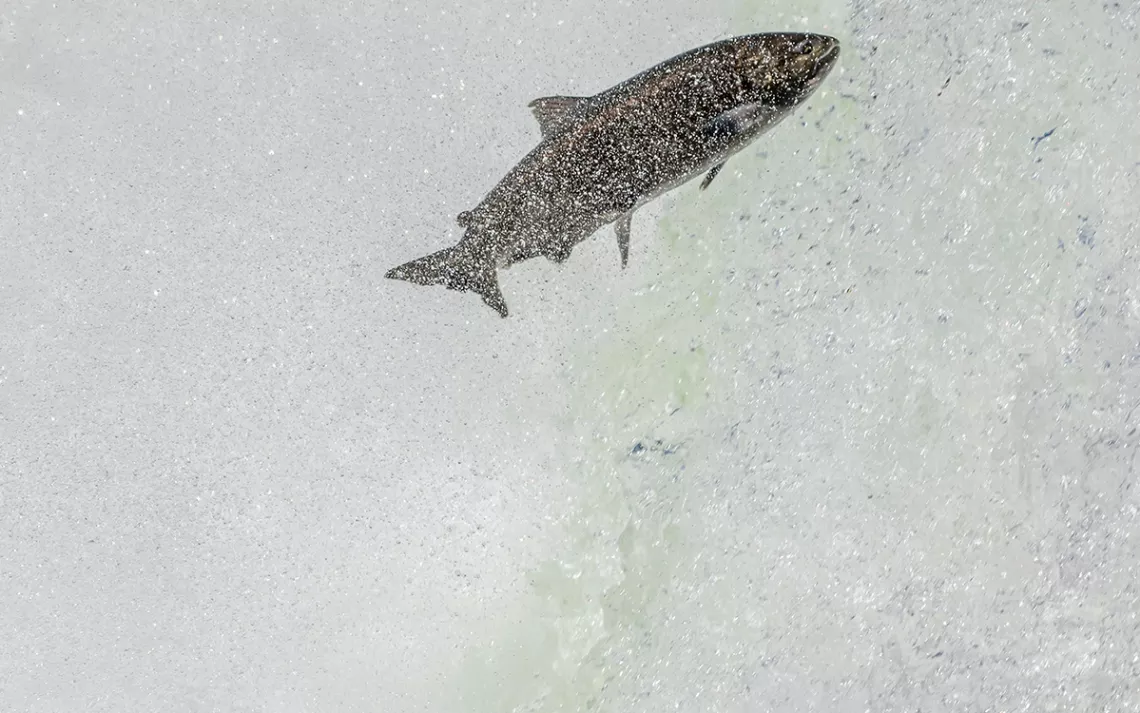Preserving Wildlife and a Way of Life
It’s time to tear down the Snake River dams and bring the salmon home

Photo by iStock/Supercaliphotolistic
Distributed by Trice Edney Newswire.
For decades, hydroelectric dams on the lower Snake River have been killing off salmon that must traverse them to spawn as well as the Southern Resident orcas that feed on those salmon and the cultures of tribal nations that consider the salmon their first food. Through an intersection of bipartisan interest that’s unusual these days and once-in-a-generation federal funding, we may finally have a chance to end the spiral toward extinction for all three.
Where millions of Chinook salmon would make the upstream journey from the Pacific Ocean to the Idaho habitat where they laid eggs before the dams were erected, in recent years that count has been in the thousands. The numbers are much worse for coho and sockeye salmon. Getting over the dams to the spawning grounds and back to the ocean has proven too much for fish that are able to travel a thousand miles to spawn. The orcas have less to eat as a result. There were only 73 Southern Resident orcas left last year.
Not surprisingly, the dire situation exists in part because the dams were built by ignoring the needs and the treaty rights of Indigenous people who consider the salmon sacred symbols of resilience and renewal. They have been fighting for the salmon with science and with litigation for years. Their treaties with the United States maintain their rights to fish in rivers of the Columbia Basin—a meaningless benefit if there are no fish to harvest.
These species are endangered; we’ve spent more than $18 billion unsuccessfully over the years to bring back salmon populations with the dams in place. As a tribal leader told me last month, “the government agencies are managing our extinction.” It’s a story that’s too familiar in so many communities that bear the brunt of choices that destroy the climate and pollute the planet, from Cancer Alley in Louisiana to hurricane-ravaged Puerto Rico.
Those fighting for the salmon, the orcas, and the people who rely on the fish spiritually and economically got a new champion two years ago when Mike Simpson, a Republican representative who represents the eastern half of Idaho, unveiled a plan that includes breaching the four dams by removing the earthen berms that flank them to let the river run freely. He got a more favorable response from the Democratic governors in Washington and Oregon than from other Republicans in the Pacific Northwest.
Last year, Governor Jay Inslee of Washington and Senator Patty Murray (both Democrats) added their voices with their own joint report and recommendations around breaching. The National Oceanic and Atmospheric Administration also concluded that circumventing the dams must be “the centerpiece action” to restore salmon populations.
The new star in this political constellation is the Biden administration, which agreed to pause the long-running litigation to look specifically at recovering salmon in the Columbia Basin, removing the lower Snake River dams, and meeting the treaty rights responsibilities. This new look at options comes along with the historic infrastructure and inflation reduction packages that President Biden and Congress have approved since 2021. Simpson points to them as the way to pay for his $33 billion plan. Replacing the electricity generated by the dams can be done with renewable generation. We can also generate jobs and revitalize state economies through greener industries and tourism tied to the outdoors.
There’s a lot more work to be done, starting with the Biden administration joining Murray, Inslee, and Simpson to make decisions that work for salmon, orcas, and tribal nations. Their proposals aren’t perfect, but they are a usable framework to get work moving to deal with the dams.
Years ago, Colin Powell told me it’s more important in a democracy to find the thing you can agree on with people who otherwise may be political opponents than the many things you disagree about. “Figure that out and you can get a lot done,” he told me. I see that playing out on the Snake River, and that can’t come a moment too soon for wildlife and Native cultures at the verge of disappearing forever.
 The Magazine of The Sierra Club
The Magazine of The Sierra Club



